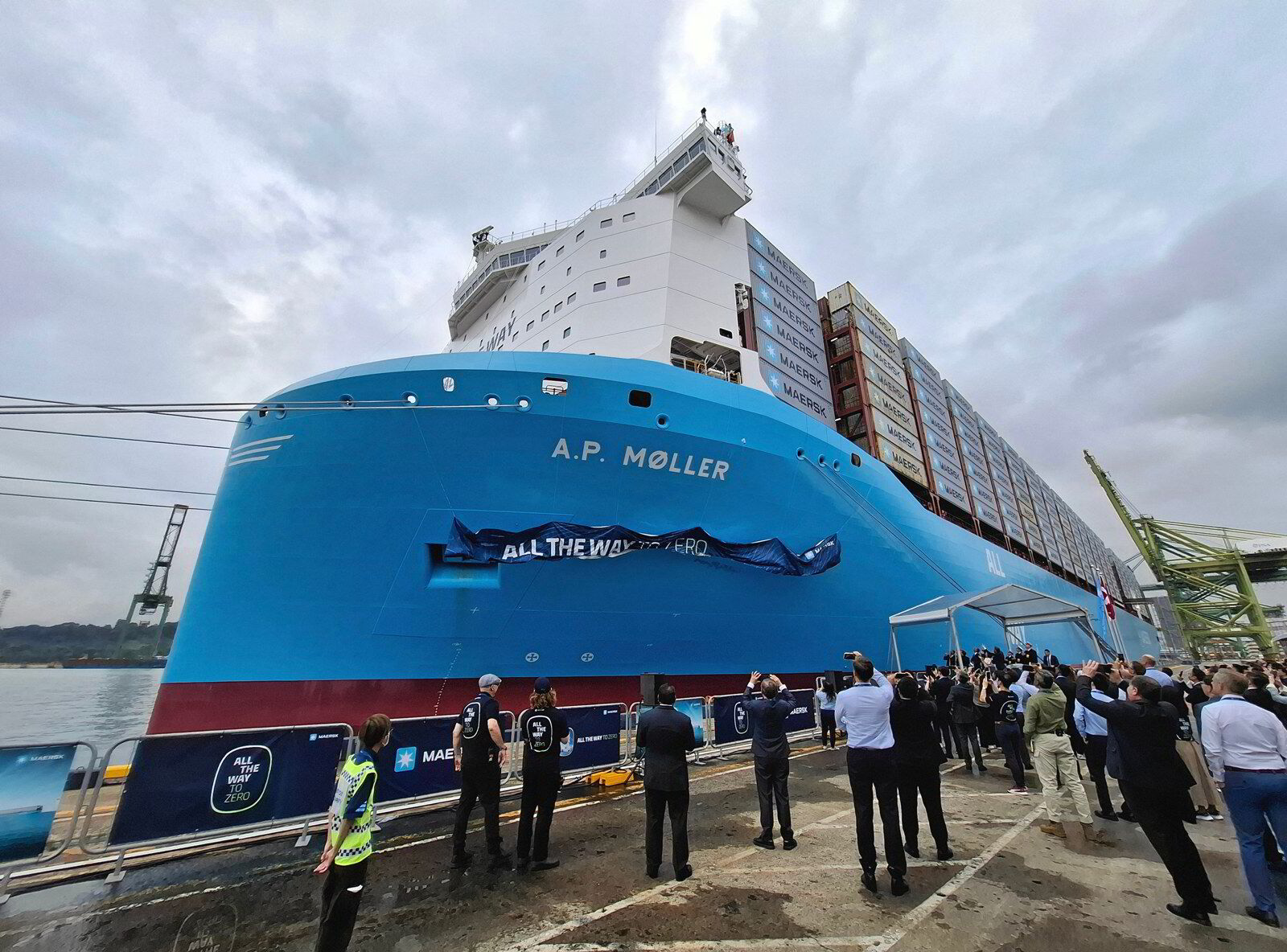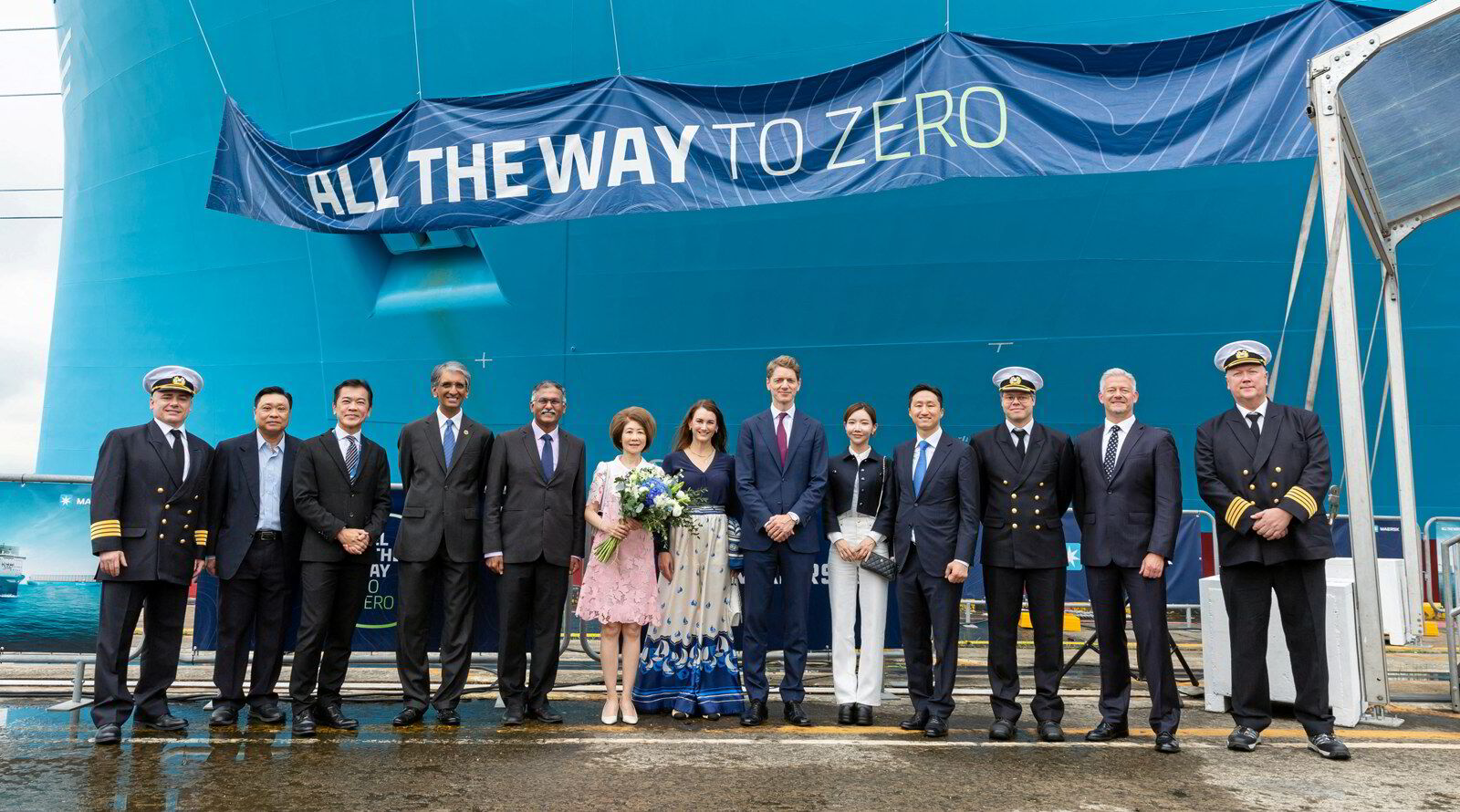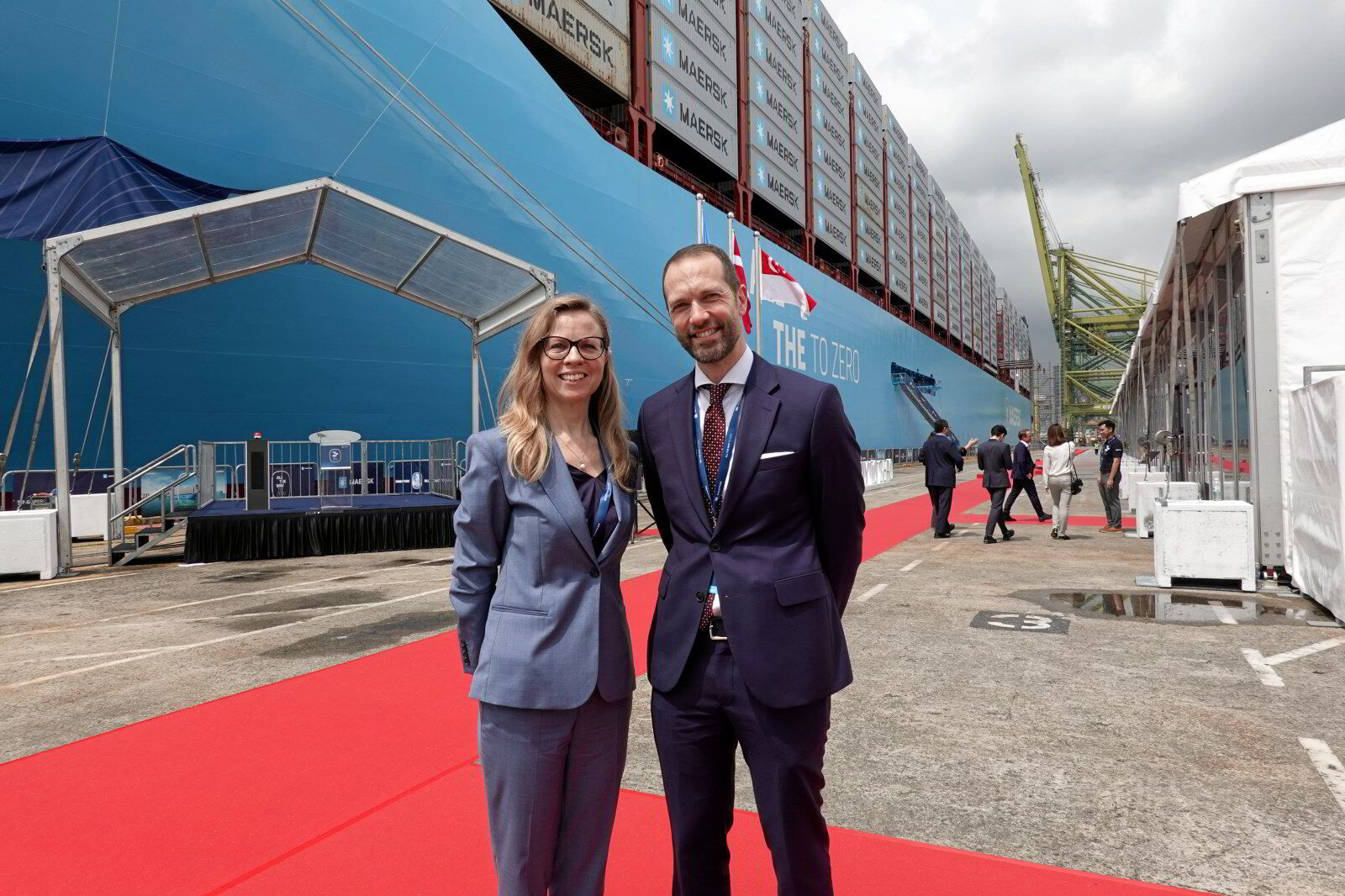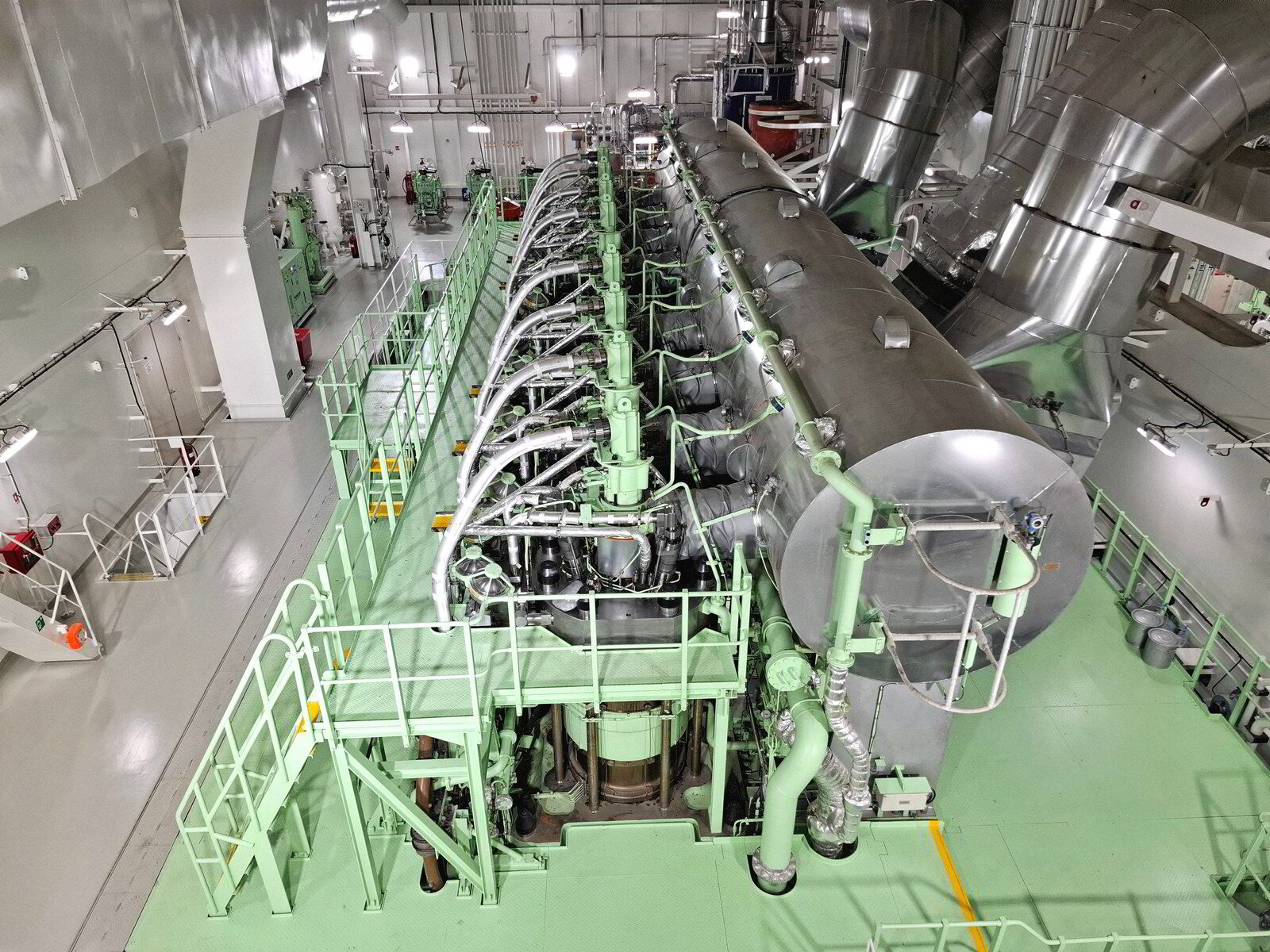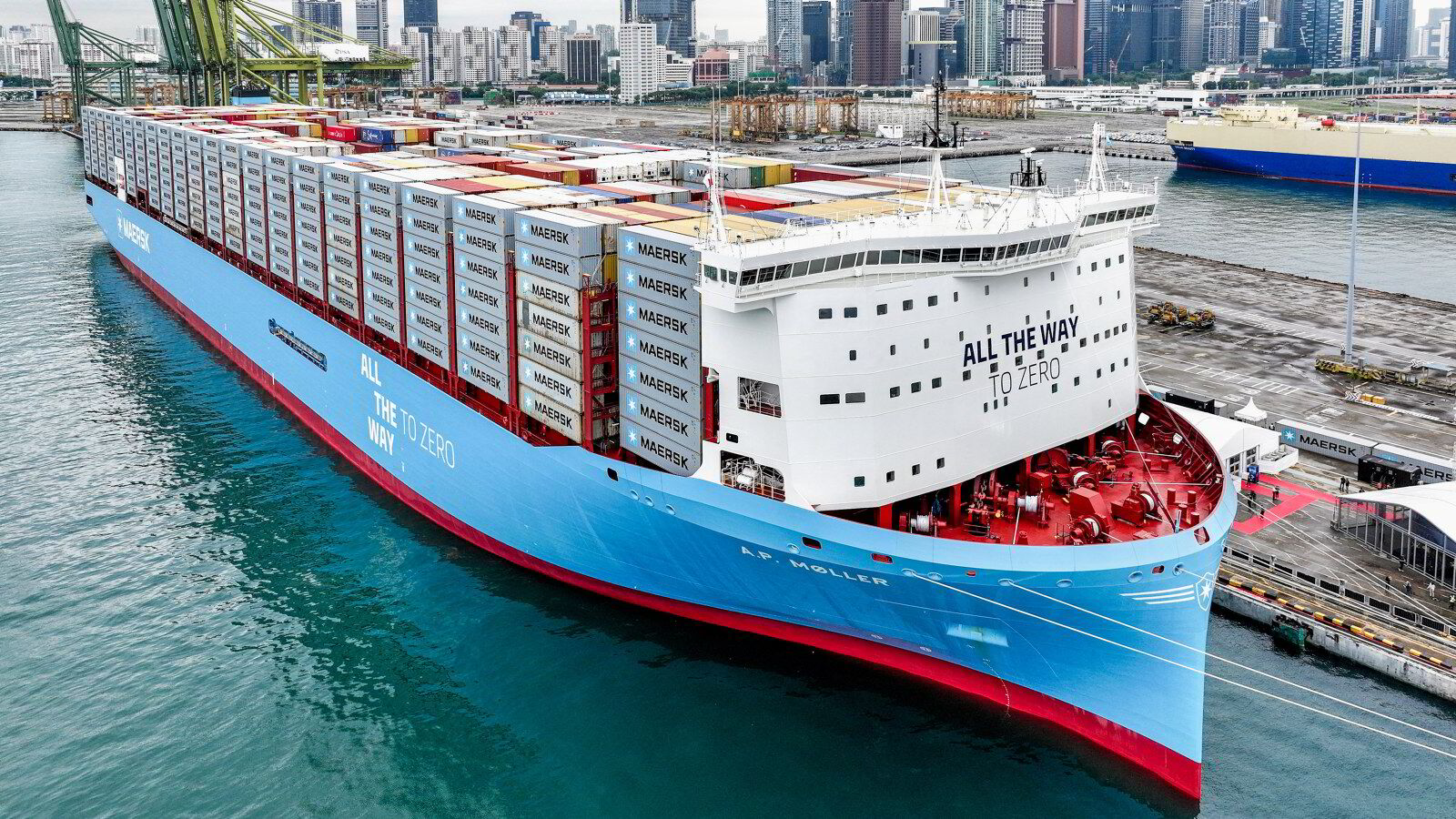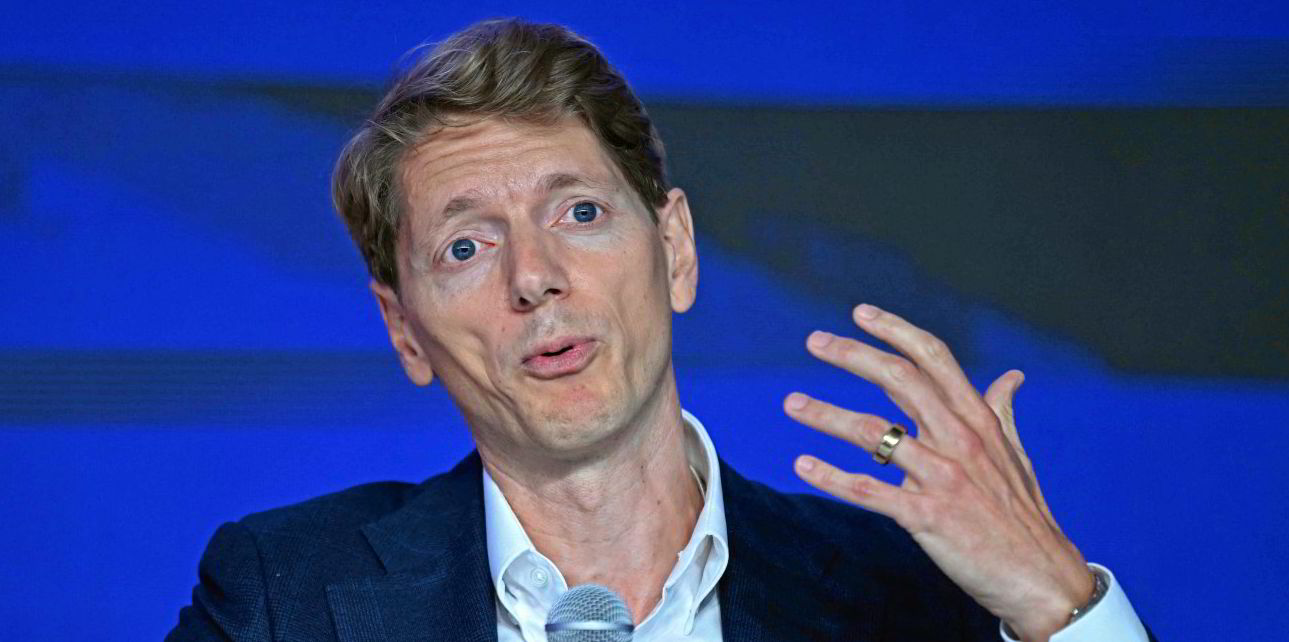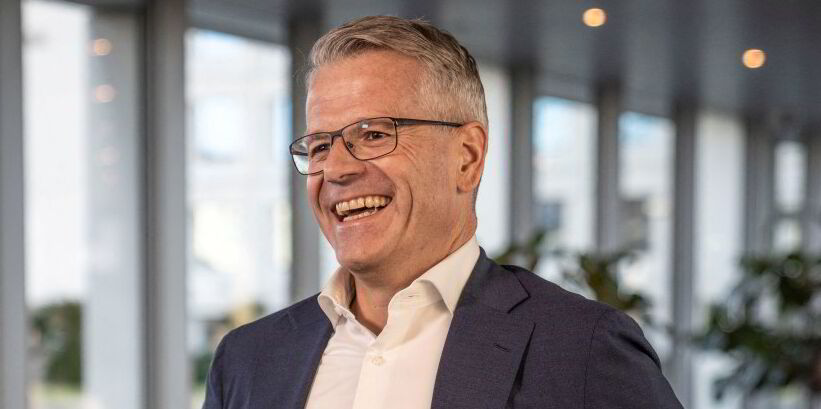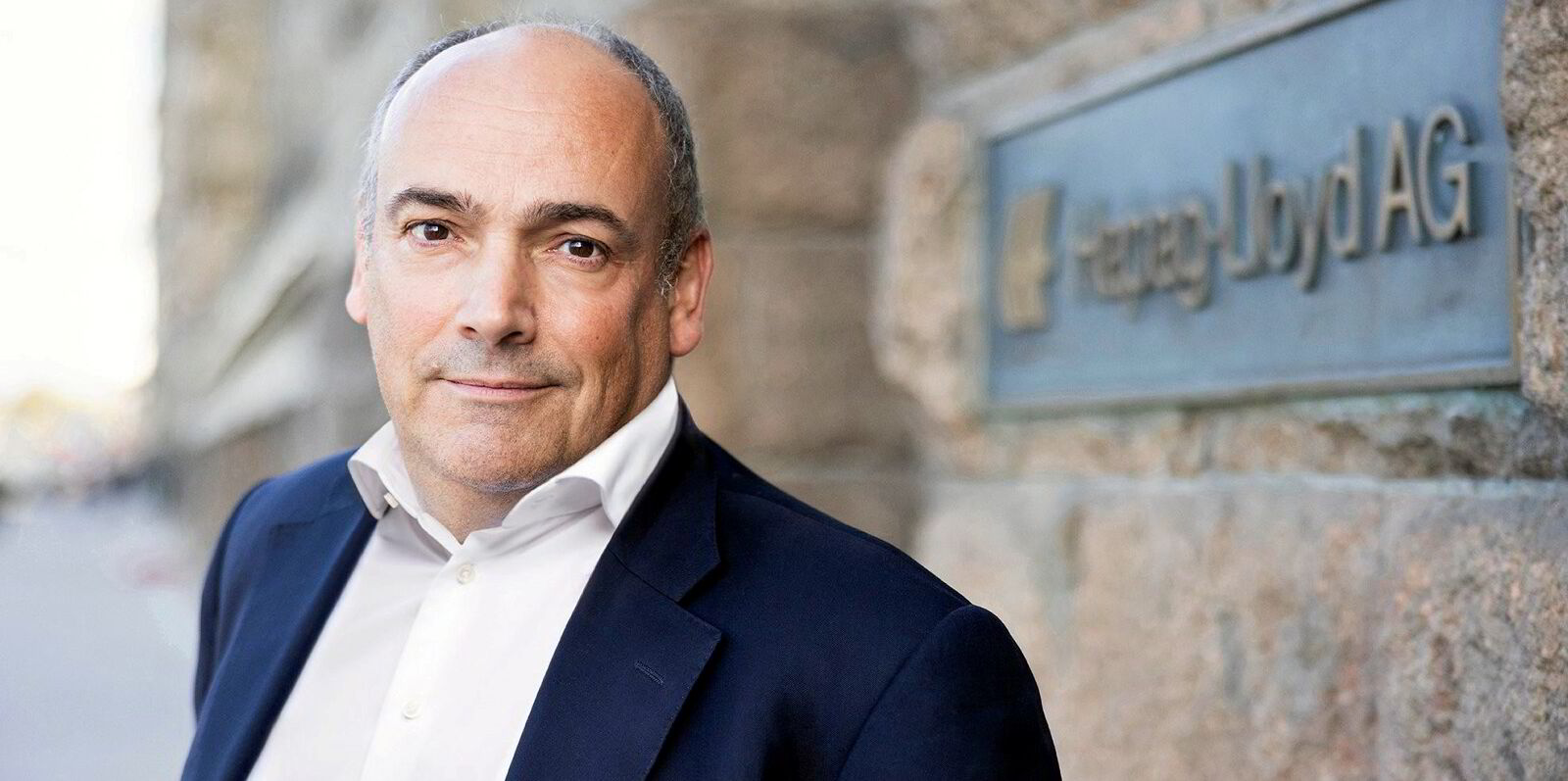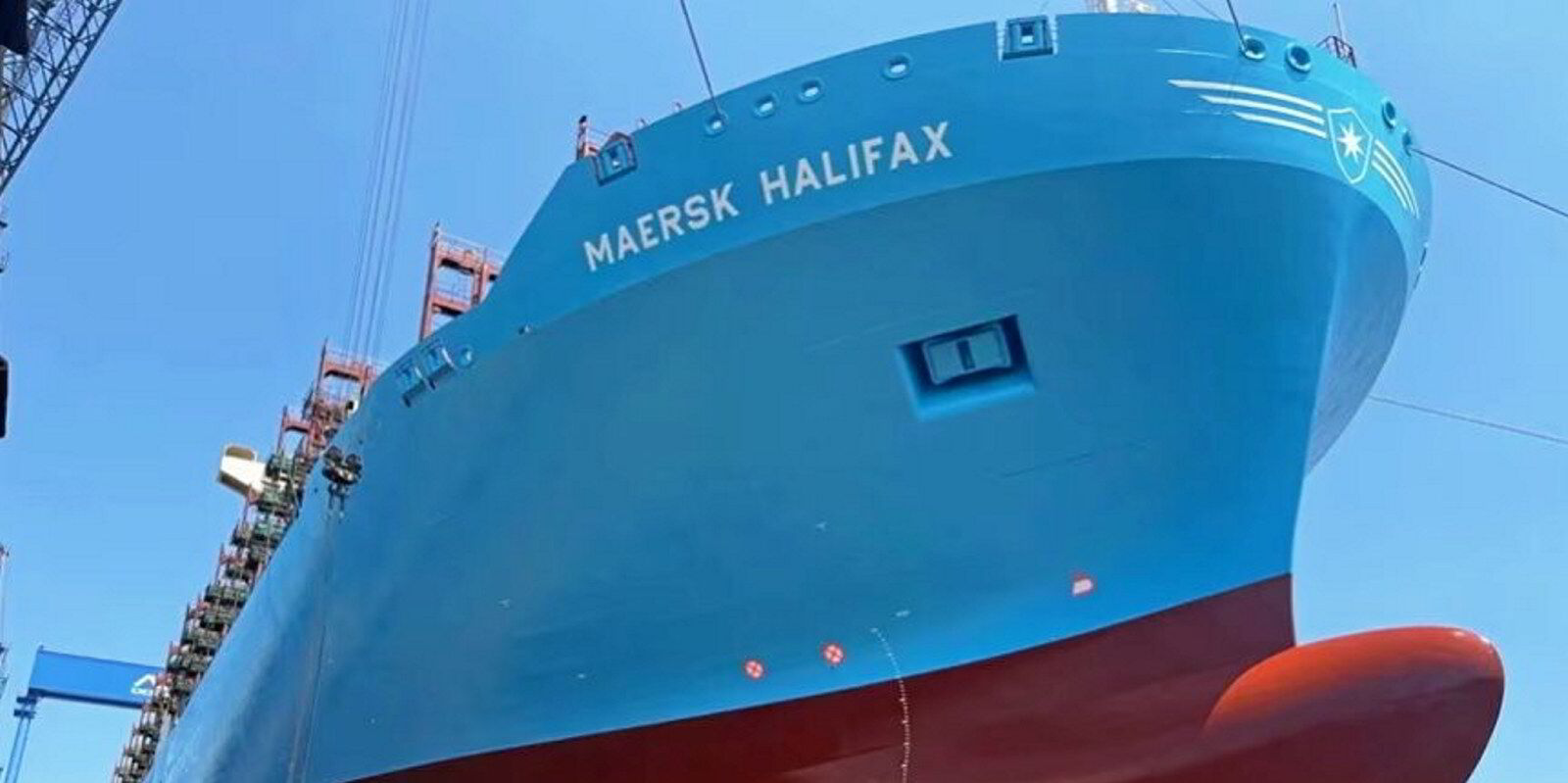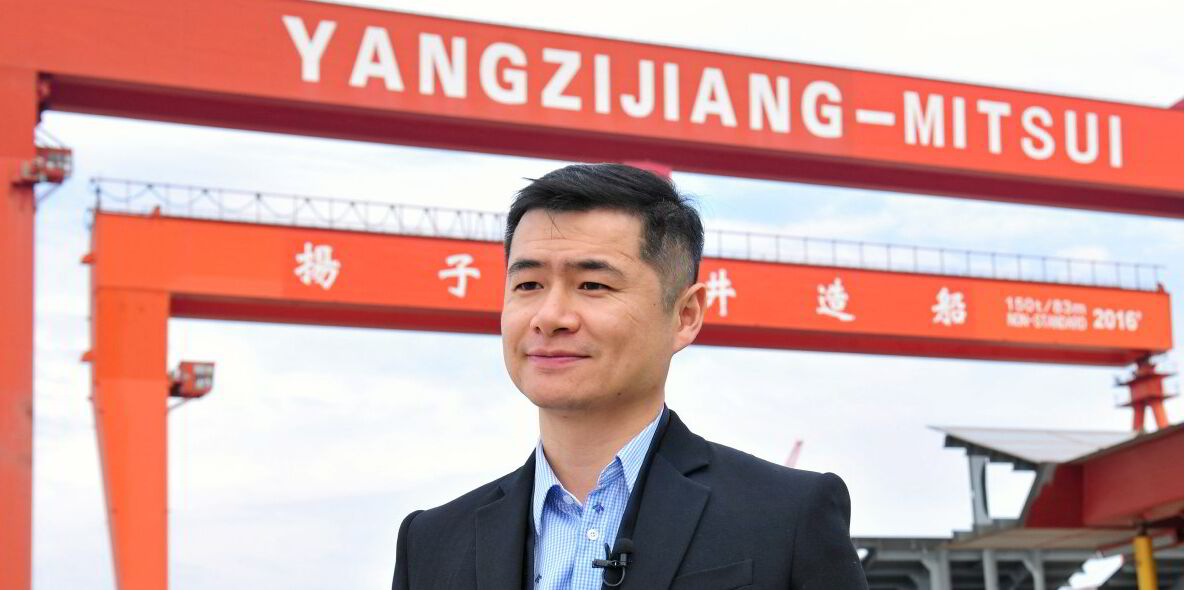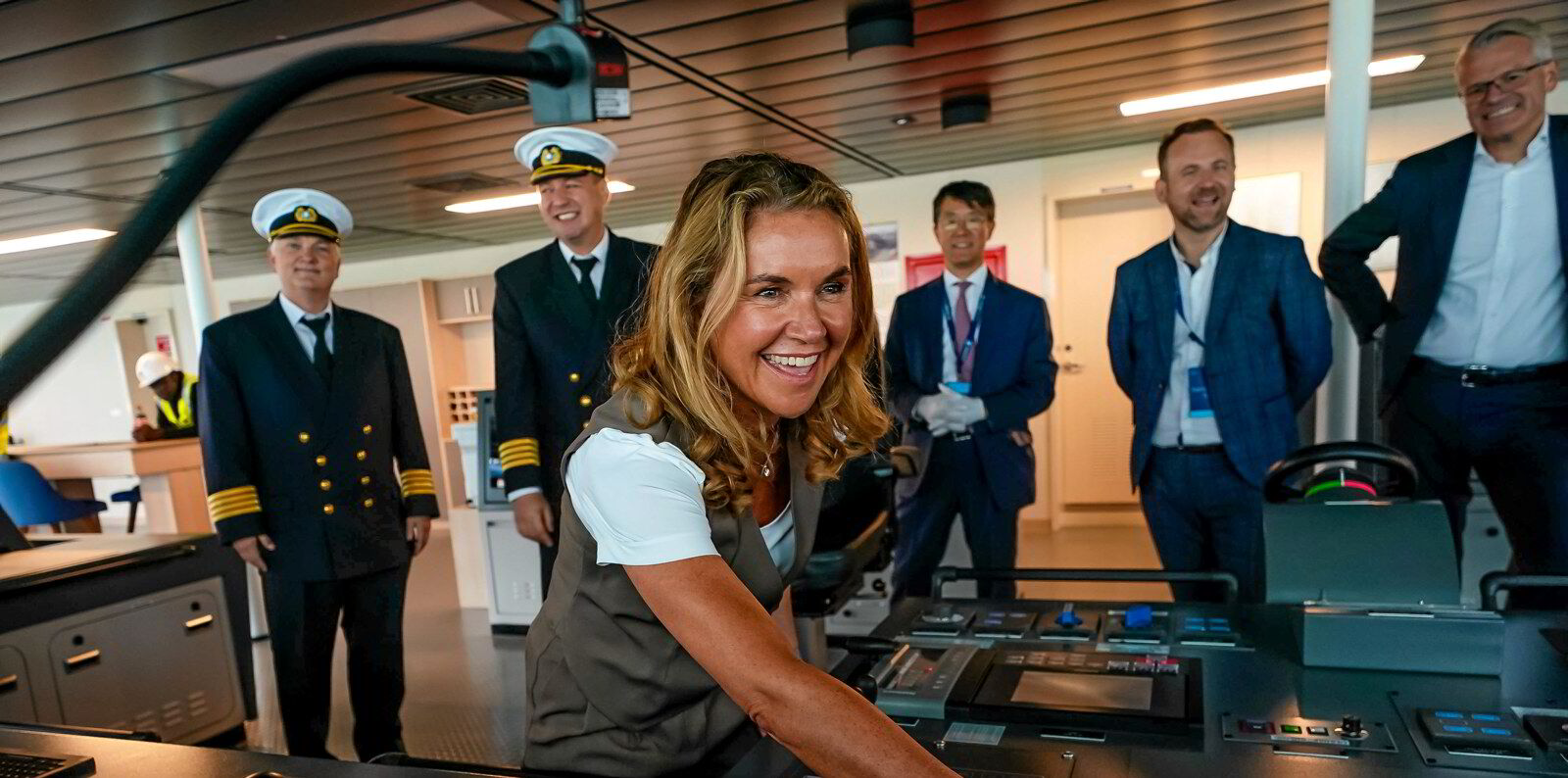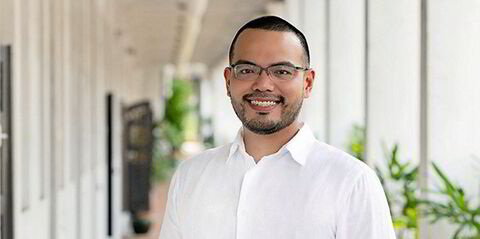AP Moller-Maersk chairman Robert Uggla did not hold back on calling for increased legislation to level the playing field for new green fuels when he took to the stage at the naming ceremony of his company’s seventh methanol dual-fuel ultra-large container vessel in Singapore.
The 16,000-teu AP Moller, fresh out of HD Hyundai Heavy Industries’ shipyard in Ulsan, South Korean, was lauded by Uggla as proof that the technology to decarbonise shipping is available.
For it to work “the energy transition depends on the availability of competitive green fuels coupled with the right regulatory IMO based framework”, the Danish shipowner said.
That means legislation to make burning fossil fuels far more expensive.
“The latter is still a work in progress,” Uggla said.
Maersk became the trendsetting pioneer of methanol-powered container ships when it ordered a raft of Equinox-class methanol-fuelled ULCVs.
This year it pivoted back to LNG with orders for up to 32 LNG dual-fuel, 16,000-teu newbuildings.
The reason for this pivot is simple — there is not enough green methanol being produced globally and it is expensive.
Uggla was not available for interviews at the Singapore naming ceremony, where guests included senior government ministers and Temasek Holdings chief executive Dilhan Pillay Sandrasegara and his wife, Chan Su Shan, who was appointed godmother of the AP Moller.
Uggla’s trusted lieutenants were out in force to talk to the media and were keen to discuss their plans for the LNG dual-fuel vessels and future developments for methanol.
Maersk vice presidents Emma Mazhari, head of energy markets/energy transition, and Leonardo Sonzio, head of fleet management and technology, stressed that the company was committed to a fuel-agnostic strategy, focusing on multiple green energy sources such as methanol, ammonia and biomethane.
The two vice presidents assured TradeWinds that the new LNG dual-fuel vessels should not be taken as an indication of any backtracking on the company’s decarbonisation plans.
Sonzio said: “Our view on LNG has not changed. LNG is a fossil fuel, and you can only yield a very marginal improvement when it comes to greenhouse gas reduction, so it’s not going to be part of the solution.”
The plan for these vessels is to eventually operate them using biomethane — also known as green LNG or e-methane — a substance produced using a power-to-gas process to make climate-neutral methane.
Mazhari said: “Now that we have ordered LNG [powered] tonnage, we have more optionality in our fuel portfolio. We are looking at how can we use that as an avenue to decarbonise our operation through the biomethane market.
“The biomethane market is developing very rapidly in Europe and in North America, where you have a gas grid. There is new production coming online that will feed into the gas grid, and we can then use it when we bunker.
“We are looking into how can we incentivise new production by committing to long-term offtakes of biomethane.”
Bullish on methanol
Both Mazhari and Sonzio said Maersk still believes methanol is a key fuel in its future.
Sonzio said: “We believe that in this decade methanol holds a lot of promise because it’s a scalable fuel and the technology is here.
“We can already start burning it in 2024,” he added, while noting that the cost of methanol will come down as the scale of production increases.
Sonzio conceded that the location and availability of supply is currently an issue, as it is for any new type of fuel.
As for the future, “it will all depend on how the market develops for green methanol”, Sonzio said.
“Today, we see a lot of promise in China, and also in the US. Over time Europe will come.
“And of course, the closer the energy production is to the actual consumption, the bunkering, the better, so I do expect that in the short term, we will see a lot of activity in the Far East,” Sonzio continued.
“At the same time, we operate a global network so we need to be able to lift this type of fuel in the key hubs where we operate.
“We are working with port authorities and suppliers to make sure that this is possible. The fact that we are bunkering in seven different ports in the first year demonstrates that it’s possible.
Equinox-class ULCVs, such as the AP Moller, can bunker with enough methanol to complete a round trip from Asia to Europe.
While there is not enough methanol supply today, production is being scaled up quickly and Maersk has roughly 70% of its projected requirements covered until 2027.
Mazhari said Maersk has signed large uptake agreements for green methanol with production in China.
“China has great potential — a lot of land, cheap renewable electricity, and also large amounts of biodiesel.
“They see it as a way to become more energy independent, so there is a lot of scalability potential. Having said that, we also see very interesting projects in other parts of the world,” she said.
Outside of methanol, Maersk is actively moving in the direction of biofuels. It claims to be the largest importer of biofuel into Singapore, where it blends it before distributing it to its ships.
Ammonia is another alternative fuel that the company believes holds a lot of promise, although Sonzio cautioned that it comes with a lot of safety challenges across the value chain.
“We are deeply investigating the fuel and the technology, and particularly what the safety barriers are in all of the steps for the operation,” he said.
Summing up Maersk’s future fuels strategy, Mazhari said that, looking out to 2030, the company can see that green methanol is going to feature heavily in its renewable fuel portfolio.
Biodiesel will also be an important fuel, and now that the company has ordered LNG tonnage, biomethane has become an option.


